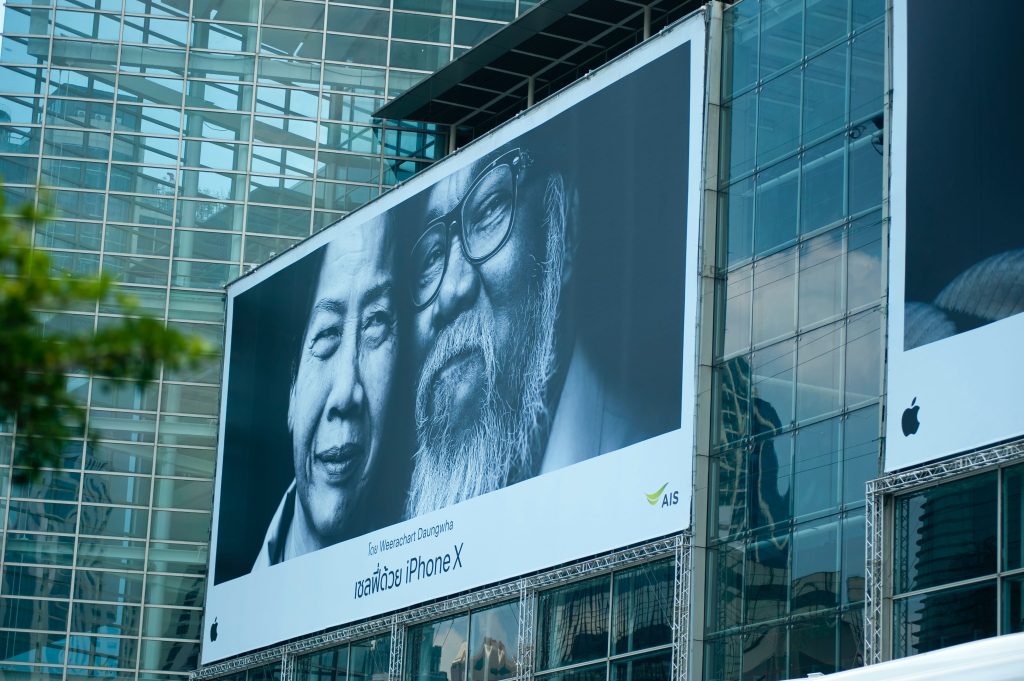The initial reaction of most marketing communications players on encountering a headline such as the one I have chosen for this intervention is to dismiss it as one of those cheeky audience-baits used by writers, whose motive is to arouse the attention and interest of readers. But the truth is that advertising, as we all know, has been on a slow but steady denudation for a period now.
Sadly, the only set of people who are not seeing the fading stature of their own industry are the practitioners themselves and that makes it very tragic. But this is not the first time that players in the marketing communications field were taken unawares by the epidemic of change. Newspapers and magazine publishers had their heads in the clouds of self-assurance when technology took away their business. Many who were tipped off on the revolutionary changes that technology and the emergence of the digital world was going to make on news consumption habit preferred to walk on air, even when the ground had been removed from under their feet. The antiquated agaracha-must-come-back philosophy in their heads blinded them to the reality of a world that has irreversibly shifted against them and their trade.
I do not know how many of us still read newspapers the same way we all used to read. But just the same way that publishers arrived late for the online media consumption party, players in the advertising sector appear to be finding it hard to accept that the profession is increasingly being disrupted.
I took notice of this slide in fortunes early in 2019, and in my book; PITCH: Debunking Marketing’s Strongest Myths, which I wrote and published the same year, I dedicated an entire chapter to this topic. Interestingly, while I was searching the world of marketing literature to validate what was then, my gut feeling, I discovered that a number of leading figures in global marketing had long seen the fading handwriting on the wall. Saatchi & Saatchi’s CEO, Kevin Roberts is one of them.
In his book, Lovemarks: The Future Beyond Brands, referred to as ‘groundbreaking’ in advertising circles, Roberts created a new path for products in their journey to the consumers’ hand and held that brands “have simply run out of juice.”
For him, the most creative way for consumer engagement is the “creation of products and experiences that have the power to create long-term, emotional connections with consumers.” In other words, advertising has lost the power to make enduring impacts on consumers and only something close to a love affair, something he called “Lovemarks” will do this.
Long before we came to read about Kevin Roberts in Nigeria, a Nigerian advertising egghead, Muyiwa Kayode, made a bold and disruptive move by trying to collapse his advertising agency, USP, into what he describes as a strategic brand management business. Kayode was ridiculed for misreading the direction of the market. But in hindsight, even those who disagreed with his change in business direction now reluctantly admit that the only error committed by this man was being ahead of the times.
Back then, Muyiwa had reasoned that there was no need separating the marketing communications functions of advertising, public relations, experiential marketing and the whole nine yards. He was convinced that the impact of advertising was being overrated and was sure that the best path to creating and sustaining healthy brands was via the integrated approach that tends towards creating a seamless relationship with the consumer, something seasonal thematized marketing campaigns usually fall short in delivering.
USP, Muyiwa’s company, might not be one of the names many easily recall in the Nigerian marketing circles these days, but he, like Roberts and a host of other farsighted industry leaders, had an idea of what the future was demanding. The only problem was he didn’t know the exact textures and forms this future was going to manifest.
The industry is feeling the roughness of that texture long foretold, and those who didn’t prepare for this future are all over the place, wringing their hands, still wondering what has taken food away from their dinner table. The sad reality is that when changes such as the one happening to advertising begin to take place, it is almost irreversible, and most traditional players are almost always caught unawares. It happened to Nokia when smartphones arrived to compete with feature phones. The Finnish phone maker which was the global market leader did not believe that change was going to affect its business, even when renowned brand strategist, Martin Lindstrom, foretold them of the impending fate.
Advertising practitioners will be the last to realize that the nebulous clouds hovering over their heads are of existential dimensions. But Nigeria’s most authoritative publication on industry spend, MediaFacts, has for nearly a decade been releasing disturbing statistics showing plunging numbers, indicating that advertising is increasingly getting a smaller share of the overall marketing budget.
For instance, figures from 2016, 2017, and 2018, showed a steady decline in ad spend of N91 Billion, N88 Billion and N81 Billion, respectively. The declining trend will certainly not be different for 2019, 2020 and 2021.
Those who follow the Nigerian advertising industry as some of us do, will be very reluctant to accept the figures delivered by Mediafacts as truly reflective of the total industry spend on advertising. There are two reasons for this.
The first is that industry regulator, the Advertising Regulatory Council of Nigeria (ARCON), has been unable to trap, in full, the volume of advertising business conducted in Nigeria. There are still tonnes of political advertising, personal paid announcements, public notices and some others like them that do not pass through the agencies. The spend here is also very huge, but frequently passes below the regulatory radar.
The second reason is the factor of digital explosion and the attendant migration of conversations to the social and online media ecosystem. This will be discussed in detail in another section of this article, but we also have what would ordinarily pass for advertising that is increasingly being pushed by Public Relations, and the new kids on the block, the digital communications and influencer communities.
Technology and changes in media consumption
 The truth is that a lot of the print media houses still operating in Nigeria and in many other parts of the world are doing so for reasons of pride. While newspapers such as The Observer has discontinued their print editions, there are still others who believe that print copies still have their market, even if this market is a generation that is gradually vanishing into the oblivion of, well, death. But I am sure that if the cost of reaching these remnants of a hitherto teeming audience was to be conducted, the result will not be complimentary.
The truth is that a lot of the print media houses still operating in Nigeria and in many other parts of the world are doing so for reasons of pride. While newspapers such as The Observer has discontinued their print editions, there are still others who believe that print copies still have their market, even if this market is a generation that is gradually vanishing into the oblivion of, well, death. But I am sure that if the cost of reaching these remnants of a hitherto teeming audience was to be conducted, the result will not be complimentary.
In Nigeria, the magazine industry, a once thriving segment of the print media industry has totally been erased like chalk-marks on a blackboard. Their print cousins are still hanging in there, surviving by faith and by a weakening culture of patronage.
Convergence of roles
Everyone in the marketing communications industry knows that although PR was the first child of the promotional mix, advertising spun off from it and went ahead to become more glamorous. It commanded bigger fees and, in most markets, attracted a lot more respect than their parents. The ad business became so big that it began to birth its own offspring in the nature of media buying, experiential marketing, et cetera.
But things are changing rather rapidly and the digital implosion is chiefly responsible. These days, the canyons that separated advertising and Public Relations have narrowed to a point where the major differentiation exists mainly in nomenclature. A lot of the things that hitherto were clearly classified as ads have metamorphosed into briefs executed by PR while a lot of what is today executed by PR include what hitherto appeared in advertising briefs.
The reason is simple: the way people in the digital ecosystem consume content varies significantly from the way they relate with it in the traditional media. The digital world offers a lot more options that reinforce individual choice and preferences, meaning that messages have to be created to reflect his or her consumption pattern and online behaviour. For sure, not everyone would choose to watch advertisements. If you want to understand the resistance most people put up against advertising messaging, think of insurance salesmen or Jehovah’s Witnesses and the walls of resistance you build each time they walk up to you, pitching policy or salvation.
The creative way around this challenge became what we know today as storytelling, which in very simple terms, means using a narrative to connect your brand to customers, with a focus on linking what you stand for to the values you share with your customers.
As an agency, Advertising or PR, if you don’t have compelling stories about the brands you are pushing into the marketplace, you are out of business. What this means is that, for advertising agencies, the jobs of copywriters are being redefined, with many already hiring a new category of employees, known as “content writers.” On their part, people in the PR environment are also learning to upskill from pushing the brands they represent to customers’ attention to engaging the customers on behalf of the brands and orchestrating citizenship behaviour from those brands.
The more these lines blur, the more advertising metamorphoses. We sure might not have the name for it now, but the future does not look like it’d have a business called advertising in the form and context we know it today, and when that future arrives, the gap between advertising and PR would be undistinguishable.
Content over copy
If advertising continues its regression in influence, it will be down to a number of factors, chief of which is the sudden fragmentation of the market into endless, intractable communities, some of them quite difficult to define. Back in the days, enclosing market segments into very simple and identifiable demographics of age, gender, geographical locations, language and culture was quite simple. But today, market segmentation has morphed into psychographic and socio-graphic units and subunits that befuddle the advertising person. Creating a simple, single message that speaks to these different people in their own language has become almost impossible.
Increasingly solving this problem are a rising horde of content creators, who populate the social media with storytelling skills that resonate with the community they identify with. Brands are on the look-out for these people and find a way to join these conversations. A case in point was when singer and songwriter, Banky W trended on social media because someone joked that his head looked like the tip of a roll-on. Nivea Roll-on quickly latched onto this by creating Twitter messages that connected with the people in this community.
Advertising is dead!
 I doubt if practitioners are smelling the coffee just yet, but the truth is that the concept of advertising has changed so much to the point where it would soon not be regarded as a profession any longer. Today, the profession of advertising exists only in the lexicon of traditional advertising people.
I doubt if practitioners are smelling the coffee just yet, but the truth is that the concept of advertising has changed so much to the point where it would soon not be regarded as a profession any longer. Today, the profession of advertising exists only in the lexicon of traditional advertising people.
Those who are driving what we still regard as advertising have chosen their own name for the jobs they do. They call it DIGITAL MARKETING, and they are heavily conspiring with the behemoth media monopolies of Google, Facebook, Twitter, Instagram, Tiktok, and co toto foist on the world, a new way of commercial messaging outreach that makes advertising narrow and antiquated.
Because of the new developments, advertising may soon become a remotely recognised dinosaur, struggling to assert its yesterday’s bragging rights on a world that has moved on.
When you speak to Digital Marketing practitioners, what you hear are subsets such as; Search Engine Optimization (SEO), Pay-per-Click, Social Media Marketing, Content Marketing, Email Marketing, Mobile Marketing, Marketing Analytics and Affiliate Marketing. They are so cynical about the world of advertising that they have found a way to avoid mentioning it in their conversations.
It is perhaps because of this disposition that many of them are reluctant to bring their trade under the regulatory supervision of the bodies such as the Advertising Regulatory Council of Nigeria (ARCON), or what we used to know as the Advertising Practitioners Council of Nigeria (APCON).
This point further highlights what I discussed about convergence in the earlier part of this article. In Digital Marketing, technology has created a fusion that has grafted Advertising, Public Relations, Media Buying and Content Creation, one into another. It is like an artist mixing all the primary colours together; something entirely new would just be birthed and you wouldn’t be able to tell the components apart.
Adblockers mirror waste advertising as wasteful
By 2021, advertisers, according to a report by Marketing Evolution [www.marketingevolution.com] were estimated to have spent a dizzying $573 billion, an uptick of 6.1 percent from what it was in 2020. This should ordinarily be good news for industry players, and suggest that the industry was expanding, rather than contracting. But data crunchers are also putting the big figures in analytical crucible and the verdict was that, as more measurable as digital advertising is thought to be, advertisers still lose about $100 million everyday to sundry inefficiencies and leakages in and around the digital marketing circuit, including what has been described as “ad fraud.” That translates to $36.5 billion per annum or 6.3 percent of total global spend.
If fraud eats nearly 10 percent of this number, one can then imagine the quantum losses that the industry has been dealing with from myriad other sources, including the deleterious effects of ad blockers, among others.
Faced with these challenges, brands have been rethinking engagement in favour of consumer experience, in a digital “back-to-basics” strategy. In order words, by orchestrating direct interactions with customers, brands are gaining a lot more trust and confidence from customers when compared to what advertising delivers. This strategy draws from the widely held view that as efficient as mass communication has been seen to be, the most effective means of communication remains the ageless method of word-of-mouth. As Fernando Polo wrote on www.medium.com on the topic, The painful decline of the Advertising Industry (and what marketers should do about it), “If word of mouth is the most trusted source of information…, creating ‘wow moments’ and joyful experiences so that users cannot help but share products or services with others (by whatever means) makes sense.”
Brands therefore are much more disposed to those creative ways of mixing with people in their communities, even if those communities are digital communities, ensuring they are part of everyday life and trends and getting people to trust them to the point of creating a viral effect.
Although it is getting harder to achieve this, the more brands succeed in connecting with customers through this method, the cheaper their marketing cost and the more the swathe of the marketing budget allocated to advertising shrinks.
The new players on free mode
It started much the same way comedy grew from ordinary “jesting” to a multimillion dollar industry in Nigeria, but one of the things diminishing advertising as we knew is the emergence of young people who describe themselves as “content writers.”
The first time I saw someone professionally describe himself as a Content Writer was on a teen’s Facebook account, and I didn’t wonder what this person was talking about for long. There are tons of them doing businesses with brands across the virtual counters of the internet, and brands love these guys because they are the ones who speak the languages of the increasingly intractable clusters of consumers.
At another end of the room are the ever rising number of (young) comedians in Nigeria, who now call themselves “skit makers.” I will mention some names: Brain Jotter, Investor Sabinus, Broda Shaggy, Mr Macaroni, Dat Warri Girl, Kiriku, Emmanuella. The list is endless.
Prior to the Covid 19 pandemic, it was only Emmanuella and a handful others that were known, but the pandemic and the lockdown that came with it gave opportunity for many others, who helped the country to cope with prolonged life indoors.
I doubt if many have missed the number of product placements that are becoming integral to their skits. In active collaboration (some might even say it is connivance) with these “new kids on the block” called Content Writers, billions of naira worth of business are leaving mainstream advertising. And they are increasingly delivering better Return on Investment than regular adverts because of their abilities to generate high consumer engagement, unparalleled shared and earned media, quick turnaround time and relatively, all at comparatively low cost for those who engage them.
Speed over process
Today’s market is in constant flux. Across political, social and even faith circles, changes are quicker than finger snaps. To follow trends on Twitter, for instance, is a full-time job. Such momentous occasions are meals brands need to quell their consumer engagement quests these days.
But advertising does not answer these questions. Traditional advertising is slow and seasonal, with campaigns planned to span months and quarters. In an era when everything important is captured in “moments,” following the traditional advertising path will deliver nothing but missed opportunities.
Brands now want nimble-footedness, and the market for that is not agencies that will take weeks to prepare for account pitches and even much longer to be appointed and briefed on projects and issues. Any business that relies solely on this in today’s dizzyingly dynamic market is condemned to quick mortality. And this is another reason for the swelling influence of content creators, content writers, skit-makers, social media influencers and all those others benefitting from the demands for quicker turnaround and low-cost engagement.

Ikem Okuhu, CEO, BRANDish Media, is a brand strategist and Public Relations practitioner with vast work experience spanning journalism, oil & gas, banking, telecom, and manufacturing sectors. With a degree in Mass Communication from the University of Nigeria, Nsukka, Ikem is a respected voice in the Nigerian Marcomms industry. He is the publisher of BRANDish, Nigeria’s first nationally circulating brands and marketing magazine, and has handled the PR and reputation management briefs of some of Nigeria’s major brands and public figures. In 2019, he published a book, Pitch: Debunking Marketing’s Strongest Myths, an effort that received rave reviews in the Nigerian marketing and communications industry. Ikem is married with four children.

